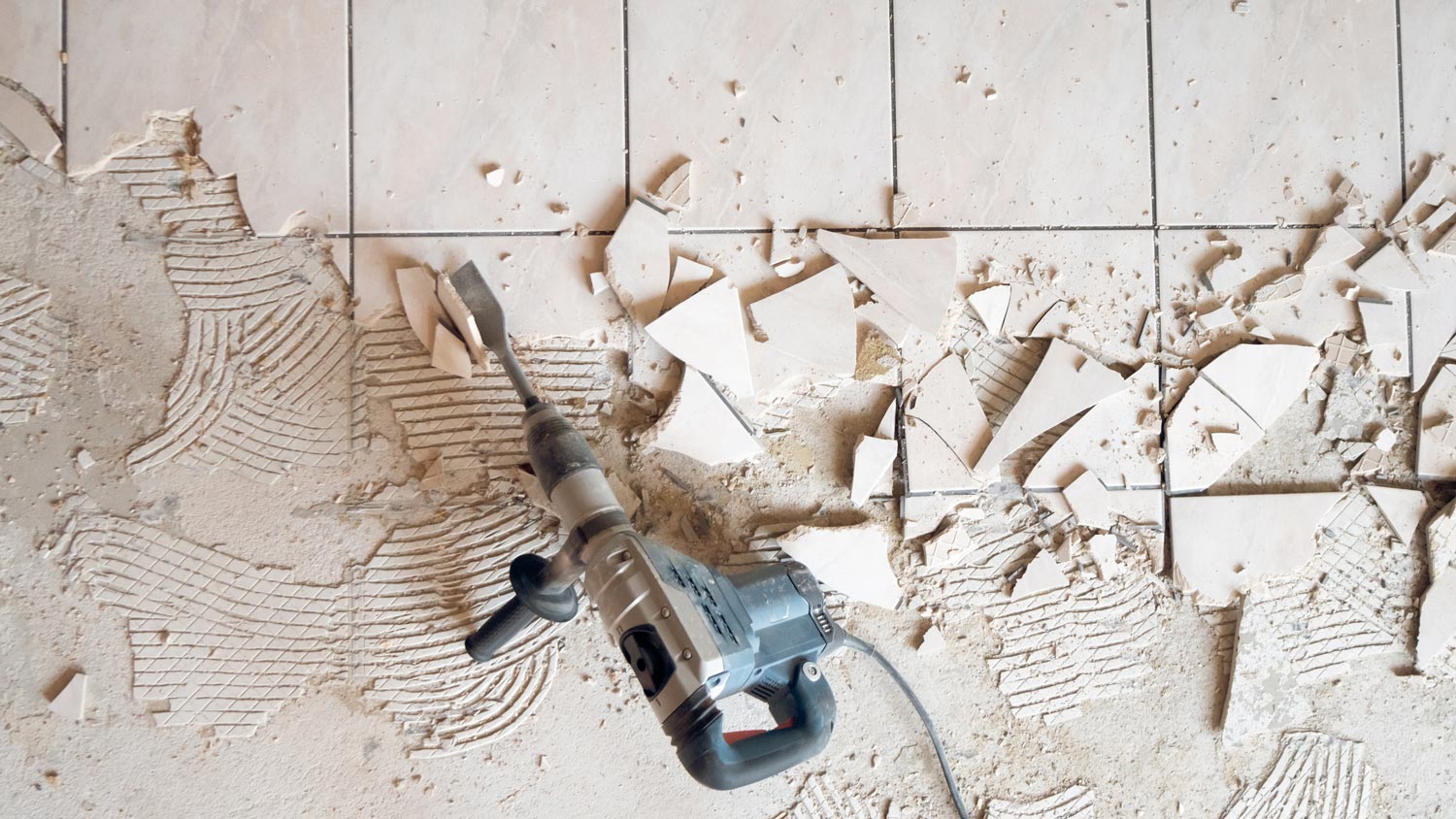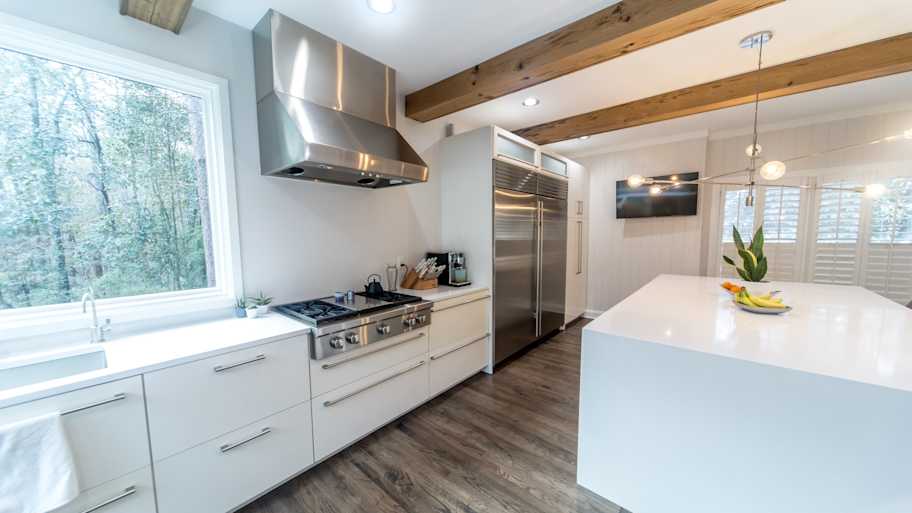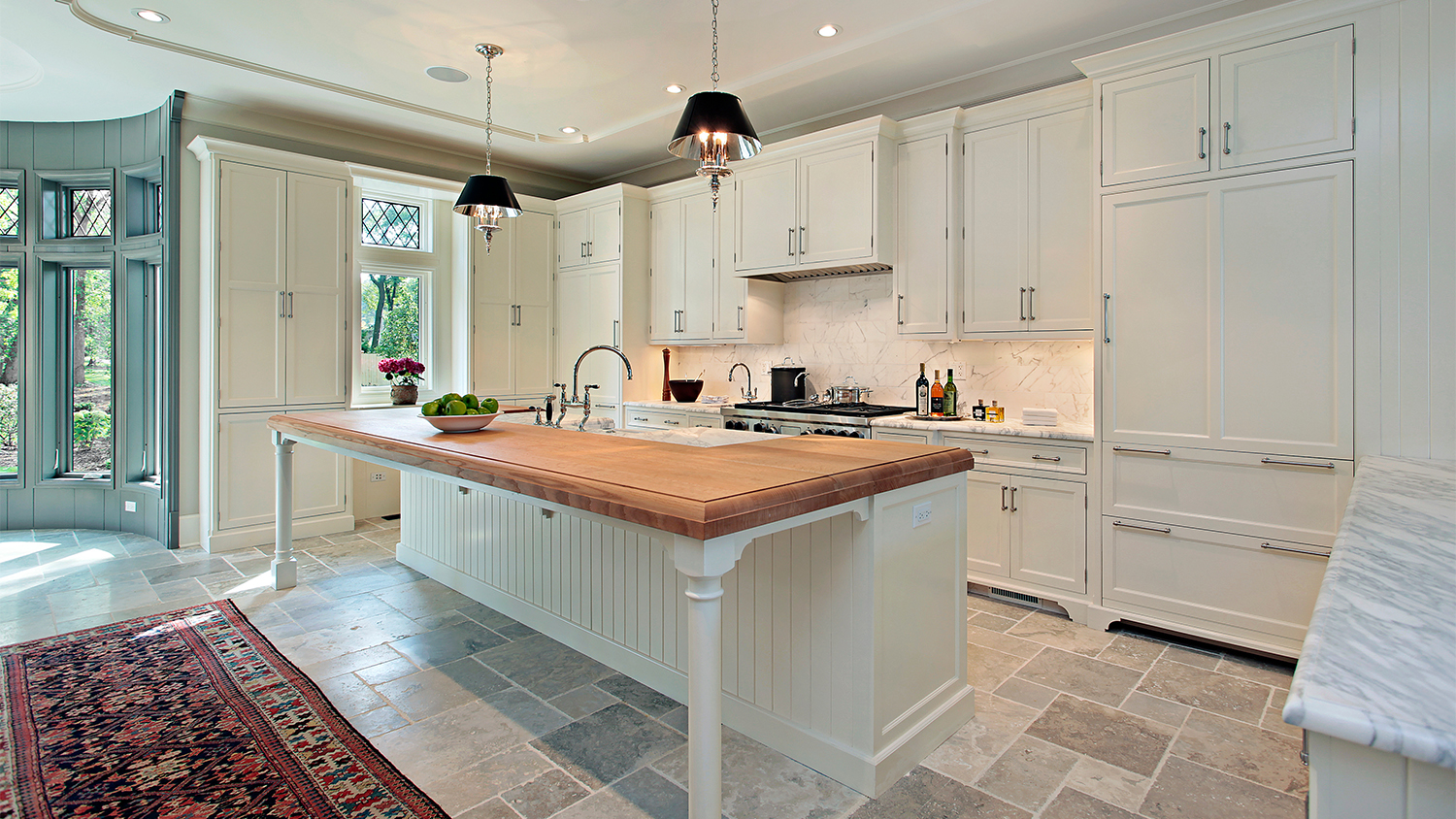
Warm floors, warm feet. Learn how much radiant heated floor costs, types of radiant floor heating systems, and pros and cons.
The cost of removing tile flooring is typically between $320 and $1,120, assuming the space is about 160 square feet. The cost can rise for larger areas or based on the tile's material.


Stone, slate, and mosaic tiles are among the most costly types of tile to remove.
Floor tile is more difficult to remove (and therefore more costly) than wall tile.
You should also budget for damage repair and tile disposal costs.
Removing grout and tile can take up to 12 hours, so this isn’t the best DIY task.
The cost to remove tile flooring can range from $100 to $1,300 for an entire project, but this job costs $560 on average. Removing tile from your kitchen or bathroom floor can create a new vibe in your space. It also allows you to repair any underlying flooring issues and keep your floor the same height. To break it down, tile removal costs $3.50 per square foot but can range from $2 to $7 per square foot. Learn about the factors that impact cost and how to save money on the project.
Removing floor tile involves labor, tools, supplies, and disposal and isn’t included in the tile installation cost. A contractor usually includes all these expenses in their quote to remove tile, but double-check before signing a contract. Costs tend to be the same whether you have ceramic tile or porcelain tile, but certain factors, like the area's size, location, and tile type, affect the total cost.
The cost of removing tile floor includes the cost of labor and tools. The larger the area of tile you need to be removed, the more it will cost because it takes contractors longer to remove it. For example, removing tile in an entire kitchen will cost more than a small half bathroom in most cases.
| Size of Area in Square Feet | Average Cost to Remove |
|---|---|
| 20 | $40–$140 |
| 45 | $90–$315 |
| 60 | $120–$420 |
| 100 | $200–$700 |
| 160 | $320–$1,120 |
Keep in mind that tile floor removers often have a minimum project cost, which can be more pricey than the base cost to remove tile from a very small area, like a half bathroom.

Just like the cost to install tile floor differs by material, so does the cost to remove tile floor. Typically, removing ceramic tiles costs much less than removing stone or mosaic tiles. Stone floors use a stronger adhesive than ceramic floors, making them long-lasting and harder to remove.
However, the cost to remove porcelain floors is similar to ceramic tiles because they use similar adhesives. Because less force is required to remove ceramic and porcelain flooring, the risk of damaging surrounding materials, such as the tub, cabinets, or sink, is lower.
| Tile Type | Comparison of Cost to Remove |
|---|---|
| Ceramic | $ |
| Porcelain | $ |
| Stone | $$$ |
| Slate | $$$ |
| Mosaic | $$$ |
The tile location plays a role in the tile removal cost. The easier it is to access the tile, the less it costs. For example, the price to demo tile floor is usually much higher than the cost to remove wall tile for a few reasons:
Wall tile is easier to access without disrupting other areas.
Wall tile usually uses less adhesive, making it easier to remove the tile quickly.
Floor tile uses tougher and more adhesive to reduce slippage since it bears more weight and has more wear and tear.
Floor tiles are harder to maneuver around, especially when you must get to tile under cabinets or around a tub.
If you hire a local flooring installer to remove your tile flooring, expect to pay between $2 and $7 per square foot, depending on labor rates in your area and the square footage of the space.
Depending on the size, renting a dumpster costs $380 on average but can range from $200 to $800 per week. The rental fee usually includes hauling and disposal. Contractors usually include these fees in their costs, but ask your contractor about disposal expenses so you aren’t surprised at the end of the project.
You may need to increase your budget if you remove your floor tile and find subflooring issues or water damage. The cost of replacing your subflooring or repairing problems depends on the extent of the damage and what needs to be fixed.
In addition to the labor, tools, supplies, and disposal costs, there are other cost considerations when estimating the cost to demo tile floor.
Site prep by a local tile contractor will add on to your fees. The final price depends on the condition of your floor and room.
Permits cost $50 to $500.
Mold inspection costs $300 to $400, and mold remediation costs $2.50 per square foot.
Asbestos removal costs $5 to $20 per square foot.
Dust-free tile removal costs $3.50 to $7 per square foot.

You can save $2 to $5 per square foot by doing the project yourself. The main costs of removing tile flooring are the tools and your time. However, removing tile and grout is a long process that takes eight to 12 hours for 100 square feet of tile. The difficulty increases exponentially if you need to remove toilets and sinks.
Removing tile is also physically demanding, and it’s easy to accidentally damage other parts of your home, like the subflooring, in the process. Plus, the flying dust and debris could irritate your eyes and lungs. This is why it’s best to have a pro handle this project from start to finish. They have tools and personal protective equipment that make for a safe project. Hiring a local flooring company will save you some backache, keep you out of the dust storm, and help you avoid possible damage.
Here are a few ways to save on costs when removing tile:
Bundle your new tile installation and removal with the same contractor
Remove the tile yourself
Recycle or sell the tile instead of disposing of it
Home is the most important place on earth, which is why Angi has helped more than 150 million homeowners transform their houses into homes they adore. To help homeowners with their next project, Angi provides readers with the most accurate cost data and upholds strict editorial standards. We extensively research project costs to develop the pricing data you see, so you can make the best decisions for you and your home. We rely on reputable sources, including the U.S. Bureau of Labor Statistics, academic journals, market studies, and interviews with industry experts—all to ensure our prices reflect real-world projects.
Want to help us improve our cost data? Send us a recent project quote to [email protected]. Quotes and personal information will not be shared publicly.
From average costs to expert advice, get all the answers you need to get your job done.

Warm floors, warm feet. Learn how much radiant heated floor costs, types of radiant floor heating systems, and pros and cons.

How much does marble flooring cost? We’ve got the answers about marble cost per square foot, types of marble, DIY cost, and more.

Staining concrete floors can add a little something to a drab slab. Learn more about how much stained concrete floors cost and what factors impact it.

Are you torn between tile-look and wood-look vinyl flooring? Let's break down LVT versus LVP to help you choose the right style for your space without overthinking it.

Your floors deal with a lot, and they may occasionally experience damage that requires your attention. Learn floor repair costs for your project.

Discover limestone flooring costs for your home. Learn about material, labor, and installation factors to plan your flooring project with confidence.